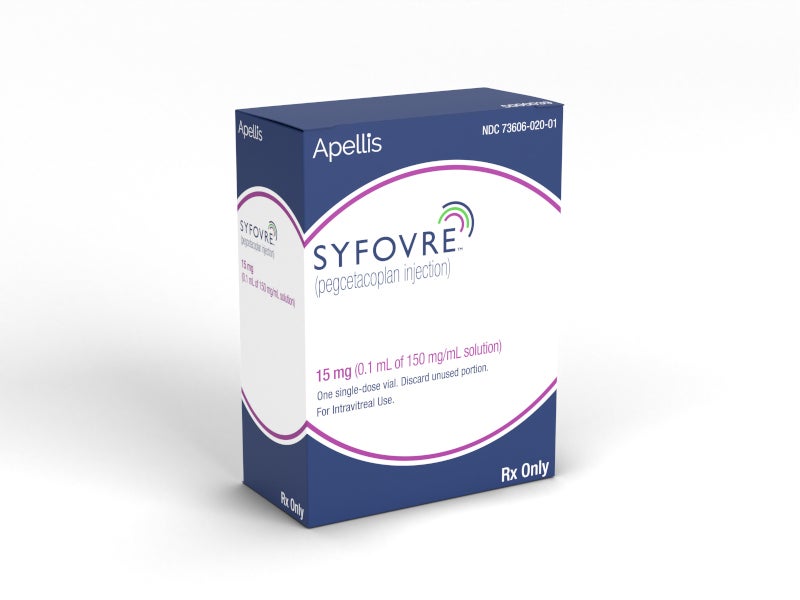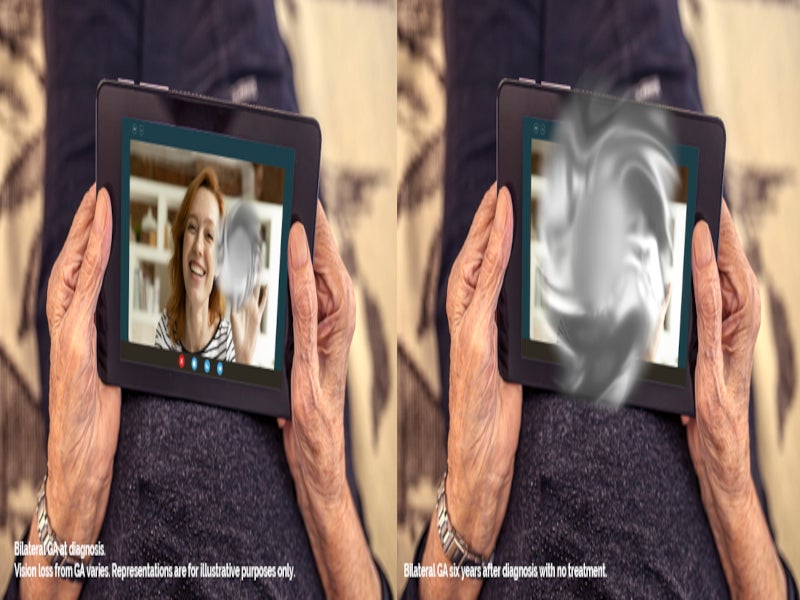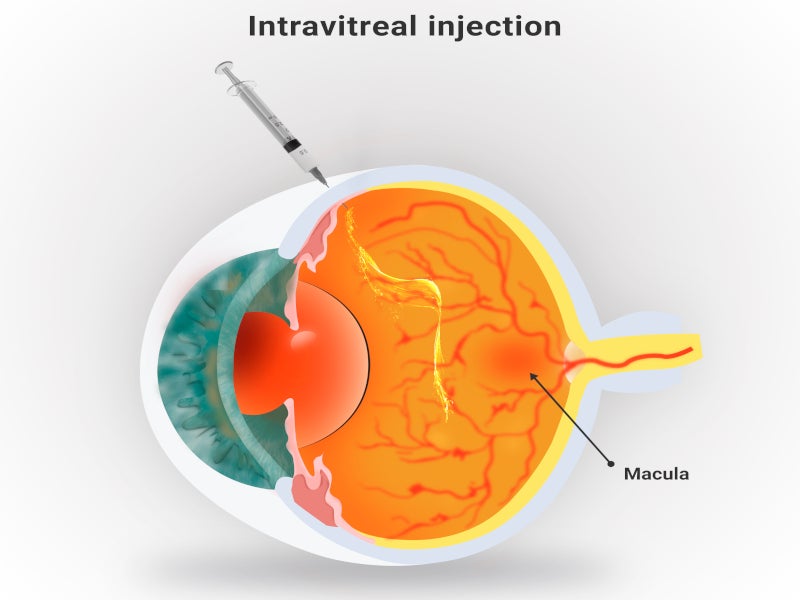Syfovre™ (pegcetacoplan injection) is a targeted C3 therapy indicated for the treatment of geographic atrophy (GA) secondary to age-related macular degeneration (AMD), a leading cause of blindness.
Developed by US-based biotech company Apellis Pharmaceuticals, pegcetacoplan injection is available as a 15mg (0.1ml of 150mg/ml) sterile, clear, colourless to light yellow aqueous solution in a single dose vial for intravitreal administration.
Regulatory approvals for Syfovre
Apellis submitted a new drug application (NDA) for intravitreal pegcetacoplan for GA to the US Food and Drug Administration (FDA) based on results from the Phase III DERBY and OAKS clinical studies at 12 and 18 months and the Phase II FILLY clinical study at 12 months in June 2022. The application was accepted and granted priority review designation in July 2022.
In November 2022, Apellis provided an additional 24-month efficacy data from the Phase III DERBY and OAKS studies to the FDA as part of its NDA to strengthen its product profile. The FDA accepted the amendment in the same month and approved the drug in February 2023.
In December 2022, a marketing authorisation application (MAA) for intravitreal pegcetacoplan for the condition was submitted to the European Medicines Agency (EMA) based on results from the Phase III DERBY and OAKS studies at 24 months. The application is under review and a decision is expected in early 2024.
The drug was also granted a fast-track designation by the FDA for the condition. Additionally, an MAA has also been submitted to Health Canada.
Geographic atrophy causes and symptoms
GA is an advanced type of age-related macular degeneration, which affects five million individuals worldwide, including one million in the US alone. It is a progressive and irreversible disease, leading to gradual and permanent visual loss.
The condition occurs due to the growth of lesions that destroy the cells of the macula, the central portion of the retina responsible for central vision and colour perception. Small spots of damaged cells develop into larger ones with time. The affected person begins to lose eyesight when the macula’s cells begin to degenerate.
It is believed that there are numerous environmental and genetic risk factors for GA. A key role is played by the dysregulation of the complement cascade, a crucial component of the body’s immune system.
The signs of GA include dullness or fading out of colours, difficulty in seeing under glare, difficulty in doing activities such as cooking, crafting, driving, and reading, as well as difficulty in recognising people’s faces and distinguishing varying shades of colours.
Syfovre’s mechanism of action
Syfovre is a complement inhibitor that targets C3, the central protein of the complement cascade.
The complement cascade protects the body against infection. It identifies and gets rid of infectious and damaged cells in normal conditions. When complement is overactivated, it can destroy and kill healthy cells and tissue, which can cause a wide range of severe diseases.
Syfovre is designed to regulate the body’s immune system’s excessive complement cascade activation, controlling the initiation and development of many serious conditions.
Targeting C3 can provide comprehensive control of diseases with significant unmet medical needs, which are driven by excessive complement activation.
Clinical trials on Syfovre
The efficacy and safety of Syfovre were evaluated in two multi-centre, randomised, placebo-controlled Phase III OAKS (APL2-304) and DERBY (APL2-303) clinical studies for 24 months in a diverse and representative sample of patients.
A total of 1,258 randomised patients (Syfovre: 839 patients, placebo: 419 patients) with GA, with or without subfoveal involvement, were studied for 24 months in both studies, with participants receiving therapy throughout the study duration.
In each trial, patients were randomised in a 2:2:1:1 ratio to one of four regimens, including Syfovre at 15mg/0.1ml monthly or every other month, or placebo monthly or every other month.
The efficacy of monthly and every-other-month Syfovre in patients with GA was evaluated by change in the total area of GA lesions from baseline as measured by fundus autofluorescence at 24 months.
In OAKS, Syfovre reduced the rate of GA lesion growth by 22% monthly and 18% every other month, compared to placebo through 24 months.
In DERBY, patients receiving Syfovre achieved a 19% reduction monthly and a 16% reduction every other month in the rate of GA lesion growth compared to placebo from baseline to month 24.
Syfovre showed increasing treatment benefits over time, with the highest benefit (up to 36% reduction in lesion growth with monthly therapy in DERBY) occurring between months 18 and 24, compared to placebo.
The safety profile of Syfovre is well established following approximately 12,000 injections. The most frequent adverse reactions reported in patients receiving Syfovre during the trials were ocular pain, neovascular AMD, vitreous floaters, and conjunctival bleeding.






